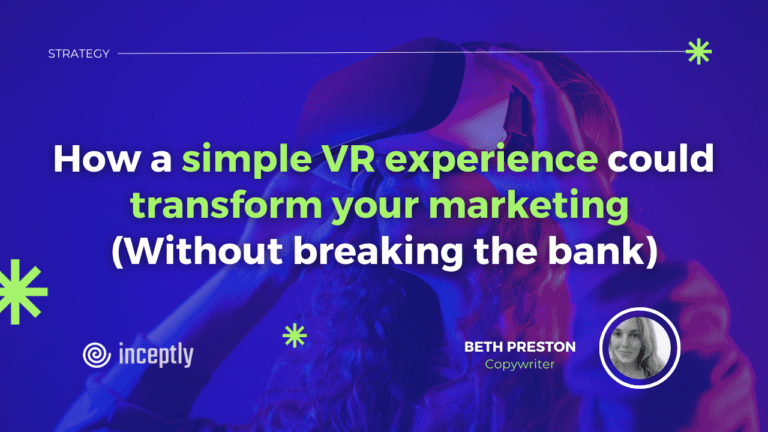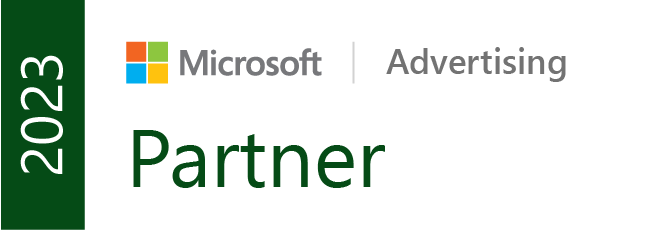
Remember when virtual reality was just a sci-fi fantasy, something we’d see in movies where characters donned clunky headsets to enter digital worlds? Well, those days are firmly behind us. VR has not only arrived – it’s revolutionizing how brands connect with their audiences and doing it in ways that would make even Steven Spielberg’s jaw drop.
Let’s face it, traditional advertising is starting to feel like trying to get someone’s attention at a heavy metal concert by whispering. In a world where consumers are bombarded with thousands of ads daily, standing out isn’t just important, it’s survival. Enter virtual reality advertising, the equivalent of giving your audience front-row tickets to an exclusive show where they’re not just spectators; they’re part of the performance.
But what makes VR advertising so special?
🌟 Unlock VidTao’s Best Deal Yet!
Secure VidTao’s Yearly plan at a 27% discount and enjoy exclusive features like Direct YouTube Linking, private community access, and full ad database.
Don’t miss this offer!
It’s simple: immersion. When was the last time you felt genuinely transported by a banner ad or billboard?
VR creates experiences that don’t just tell your brand’s story; they let people live it.
Game-changing campaigns that are raising the bar
Let’s talk about some brands that aren’t just dipping their toes in the VR waters, they’re doing cannonballs into the deep end.
1. Walmart's virtual shopping revolution
Remember when online shopping was revolutionary? Walmart took it several steps further by creating VR shopping experiences that let customers walk through virtual stores, pick up products, and examine them as if they were really there. It’s like having a personal shopping assistant who never gets tired and doesn’t judge your midnight shopping habits.
2. Volvo's virtual test drive
Volvo realized something brilliant: why should test drives be limited by geography or inventory? Their VR test drive experience lets potential customers feel the thrill of driving their latest models from anywhere in the world. It’s like having a dealership in your living room, minus the awkward coffee and sales pitch.
3. IKEA's virtual home designer
IKEA’s VR app lets customers visualize furniture in their actual spaces before buying. No more returning that couch that looked perfect in the store but takes up half your living room. It’s like having an interior designer who works for free and never gets annoyed when you change your mind for the tenth time.
The psychology of VR success
Here’s where things start to get really interesting.
VR advertising isn’t just about cool technology, it’s about making real connections. When someone puts on a VR headset, they’re not just watching content; they’re living it.
Brain research shows that our minds process VR experiences almost like real events. When you’re in VR, your brain, specifically the part that creates memories, responds as if you’re really there. Scientists call this feeling “presence.”
Unlike regular ads that just use sight and sound, VR engages more of your senses. It can make you feel like you’re moving in space, change your heart rate, and trigger real emotions. Stanford researchers have found these experiences can actually shape how people think and act later.
Think about it: what would stick in your mind more – reading about a beach resort, or feeling like you’re actually walking on it, hearing waves crash around you? VR creates what scientists call “episodic memories” – memories that include feelings, sensations, and a sense of being there. Studies show these memories last longer than those from just reading or watching something.
The numbers back this up. Research from PwC shows VR learners are up to 4X more focused than classroom learners and 275% more confident in applying skills learned. This is backed by a 2023 systematic review in Scientific Reports that found VR experiences significantly enhance learning outcomes and engagement.
The bottom line? Marketing is changing from simply telling people about products to letting them experience them firsthand. And it’s making a hell of a difference.
Small business, big possibilities
Now, I know what you’re thinking: “This all sounds great for the Walmarts and Volvos of the world, but what about us smaller fish?” Here’s the good news: VR advertising isn’t just for corporate giants with unlimited budgets anymore.
Accessible VR solutions
Thanks to platforms like Google Cardboard and affordable VR creation tools, small businesses can create impressive VR experiences without breaking the bank. It’s like having a Hollywood studio in your pocket, minus the demanding directors and expensive craft services.
Creative applications for small businesses
Real estate agents are using VR for virtual property tours. Restaurants are offering virtual kitchen experiences Fashion boutiques are creating virtual fitting rooms Local tourism businesses are providing virtual destination previews
The key is starting small and focusing on experiences that add genuine value for your customers. You don’t need to create a full-blown virtual world, sometimes a simple, well-executed VR experience can be more effective than a complex one.
The technical side: Making it work
Let’s talk nuts and bolts for a moment. Creating effective VR advertising isn’t just about having a cool idea, it’s about execution.
Here are some key considerations:
Platform compatibility
Ensure your VR experience works across multiple devices and platforms. The last thing you want is to create something amazing that only works on that one specific headset that nobody owns.
User experience - keep it simple and intuitive
If users need a PhD in computer science to navigate your VR experience, you’re doing it wrong. Think of it like designing a door, if people are pushing when they should be pulling, that’s on you, not them.
Content quality
Just because you can create amazing visual effects doesn’t mean you should go overboard. Like a good recipe, it’s about balance. High-quality content that tells a compelling story will always trump flashy effects that serve no purpose.
Advertising in the virtual age
As we peer into the crystal ball of advertising’s future, it’s clear that VR is more than just a passing trend. With the metaverse on the horizon and technology becoming increasingly sophisticated, we’re only scratching the surface of what’s possible.
Emerging trends to watch
Social VR experiences
The next big thing? Shared VR experiences where consumers can interact with brands and each other simultaneously. Imagine virtual product launches where people from around the world can gather, interact, and experience new products together. It’s like a global party where everyone’s invited, and nobody has to worry about cleaning up afterward.
AI integration
The combination of VR and artificial intelligence is creating more personalized and responsive experiences. VR environments that adapt to user behavior and preferences in real-time are becoming a reality. It’s like having a virtual space that knows you better than your significant other (and remembers your preferences more consistently).
Haptic feedback
The integration of touch sensations into VR experiences is making them even more immersive. Soon, you’ll be able to feel the texture of that virtual product you’re considering buying. It’s the difference between watching a cooking show and actually getting to taste the food.
Best practices for success
Before you dive headfirst into the VR advertising pool, here are some key takeaways to consider:
1. Start with clear objectives – don’t create VR experiences just because you can. Make sure they serve a specific purpose and align with your overall marketing strategy.
2. Focus on value – create experiences that provide genuine value to your audience. Entertainment is great, but utility is better.
3. Keep it accessible – remember that not everyone has the latest VR technology. Consider offering scaled-down versions of your experiences for more basic devices.
4. Measure and adapt – track how users interact with your VR experiences and be ready to make adjustments based on feedback and data.
Virtual reality advertising isn’t just changing how brands communicate with their audiences, it’s redefining what’s possible in the world of marketing. As technology becomes more accessible and sophisticated, the opportunities for creating meaningful connections with consumers will only grow.
Whether you’re a multinational corporation or a local business, the key to success in VR advertising lies in understanding its potential while remaining grounded in marketing fundamentals. It’s not about creating the most technologically advanced experience; it’s about creating the most meaningful one.
As we move forward, the brands that will succeed in this space won’t be the ones with the biggest budgets or the flashiest effects. They’ll be the ones who understand that at its core, VR advertising is about creating authentic, valuable experiences that resonate with real people.
So, are you ready to step into the future of advertising? The virtual door is open, and the possibilities are endless. Just remember, in this new reality, the only limit is your imagination, and maybe your motion sickness tolerance.
Remember, as with any powerful tool, VR advertising is only as effective as the strategy behind it. Use it wisely, use it purposefully, and most importantly, use it to create experiences that your audience won’t just watch, they’ll remember.
Now, if you’ll excuse me, I need to go test drive a virtual Ferrari.
For research purposes only, of course.
Unlock real results with YouTube ads, risk-free!
Zero upfront cost—pay only for results.
Limited availability.
Want more content like this?
Don’t miss out on the latest news and updates from the world of Direct Response advertising! Subscribe to our newsletter today 👇

Beth Preston, Copywriter
Beth is a rising star on our copywriting team. She always brings her A-game to the table, delivering a fresh perspective and incredible converting copy for our clients.
Like this post? Let's continue the conversation!
Get in touch with us by shooting us a quick email or tagging us on LinkedIn or Instagram, and sharing your thoughts. Your feedback helps us keep our blog relevant and interesting.
Get Our Newsletter
Need Help?
Get in touch with us for an insightful evaluation of your ads + actionable tips to help amp up your direct response revenue






